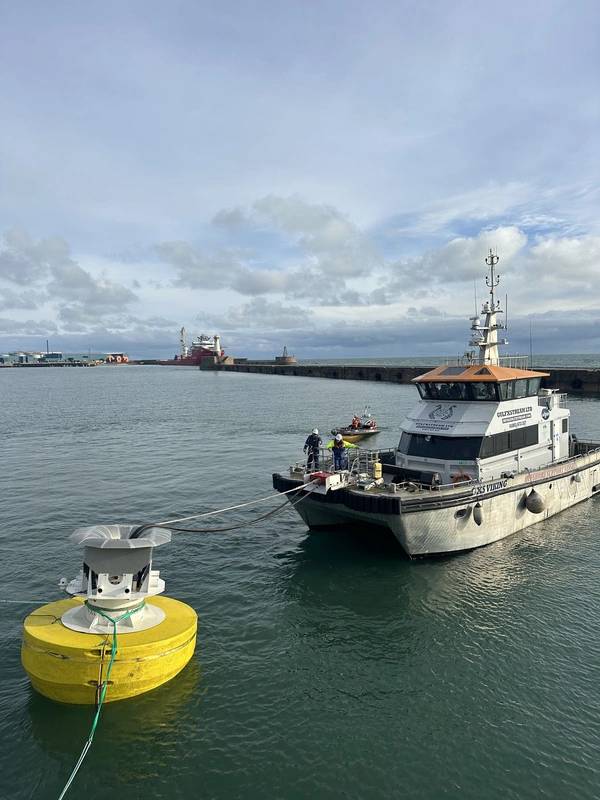
Oasis Marine, a company specializing in marine charging solutions, said Tuesday it had successfully transferred power through the Oasis Power Buoy to a Crew Transfer Vessel.
"This pioneering achievement paves the way for hybrid and fully electric vessels in offshore wind farms, as well as reducing maritime emissions by expanding vessel charging beyond ports and harbors," Oasis Marine said.
According to the company, during a series of tests in Peterhead Port Authority, energy was transferred via the Oasis Power Buoy (OPB) to a load bank on a Crew Transfer Vessel, through a specially designed deck-head.
Additionally, Oasis Marine said, mooring tests were carried out, where the CTV, GXS Viking, successfully moored to the OPB. Testing was completed on either side of Storm Babet, so achieving successful results was even more significant given the weather challenges faced, Oasis Marine said.
George Smith, Managing Director of Oasis Marine said: “Innovative developments are being made with the design and production of electrified vessels, but range will always be constrained by battery capabilities. The ability to re-charge offshore is crucial for decarbonizing maritime. We have proved that the Oasis Power Buoy expands the capability to charge vessels offshore, enabling a substantial reduction of CO2 emissions and fuel costs. This ensures hybrid and electric vessel use can be maximised and is a very encouraging development for the global maritime industry.
“Completing testing during the unprecedented Storm Babet brought challenges, but all credit to the team working on this project that we have emerged from these trials with major gains. The core principles of the Oasis Power Buoy have been proven and we now have a programme of optimisation over the winter months and final tests next spring, before deploying in an offshore wind farm for a pilot project thereafter.
“As well as our own team, I would like to thank the operational teams from 23 Degrees Renewables Ltd, GulfXStream Ltd, and JifMar Scotland Ltd for their excellent support during these trials.”
Upon commercial deployment the Oasis Power Buoy will initially be connected at offshore wind farms to power Crew Transfer Vessels. Next phases will be versions for larger Service Operations Vessels (SOV) in windfarms, as well as decarbonising emergency response vessels. The design optimizes CO2 emissions reduction by supplying renewable power via zero-emission wind power.
"This promises significant progress for maritime decarbonisation and acceleration towards achieving Net Zero targets," Oasis Marine said.